Architects, designers and enthusiasts of history are all bound by their common love for the unknown and unexplored. We are constantly fascinated by the unfathomable depths of nature and mankind, and their creatios. Our shared passion extends beyond creating and building; it encompasses a love for travel and exploration. This article enlists a list of ten unexplored places around the world, and is worth exploring owing to its history, architecture or perhaps cultural legacy!
Great Mosque of Djenné, Mali
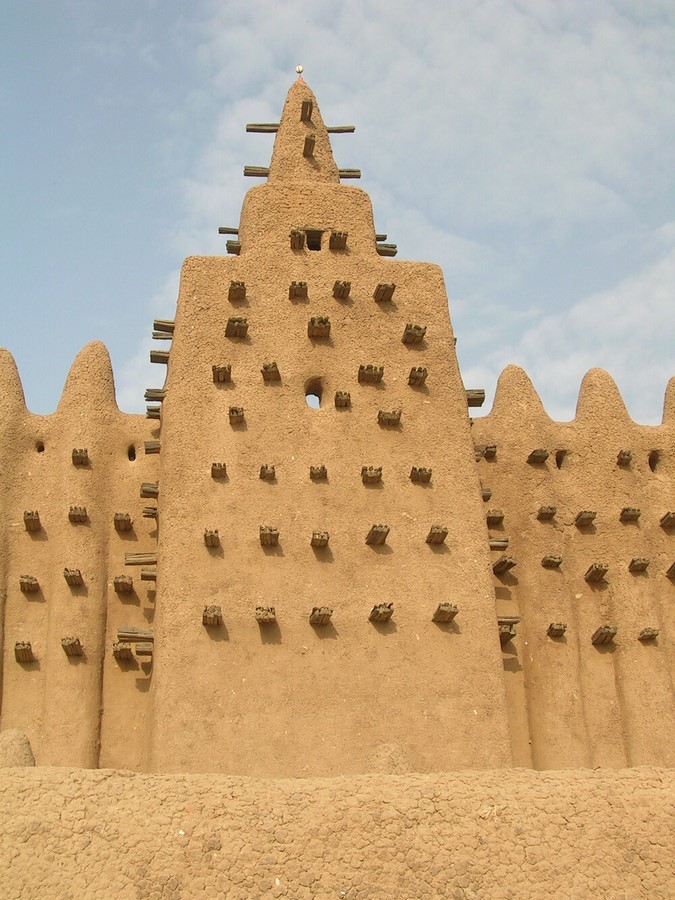
Located in the trans-Saharan gold trade route of Djenné in the African country of Mali, the renowned Great Mosque is a treat to the sore eye. Built-in the 13th century, the UNESCO World Heritage site is unique in its construction methods and architecture. The Great Mosque in Djenne is the world’s largest and only standing mosque made of sun-baked mud bricks and decorative torons or strands of ropes. The prayer hall of the shrine can accommodate approximately 3000 worshippers.
Despite periods of decay and reconstruction, the mosque continues to stand as a testament to Mali’s cultural and religious legacy. The mosque’s strategic platform safeguards it from seasonal floods, transforming the terrain into an island during rainy seasons.
Chan Chan, Peru
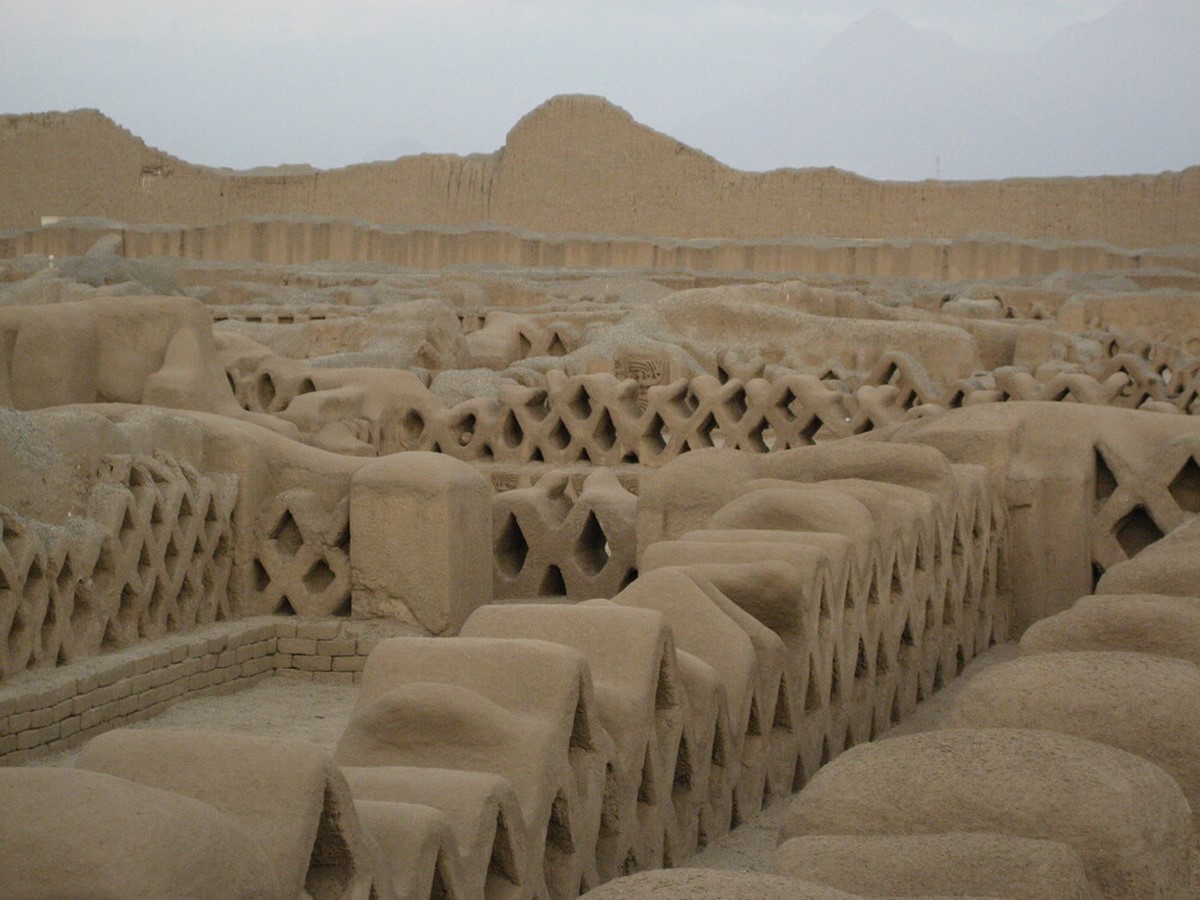
Chan Chan, once a thriving capital of the Chimu Kingdom of pre-Columbian America, now stands abandoned and derelict on Peru’s northern coast. Covering about 14 square miles, the city is well-preserved with adobe brick structures and facades adorned with intricate patterns and reliefs. The town comprises walled citadels, temples, cemeteries, and gardens, likely belonging to the aristocracy. The lower strata of the society, such as the farmers and artisans, lived in more spartan, less durable quarters. Evidence of pottery, metal, and textiles are found near the ruins, reflecting on the ancient standardized designs. In the late 15th century, they succumbed to the Inca rule, and Spanish conquerors later documented their history and myths.
Underground Churches of Lalibela, Namibia
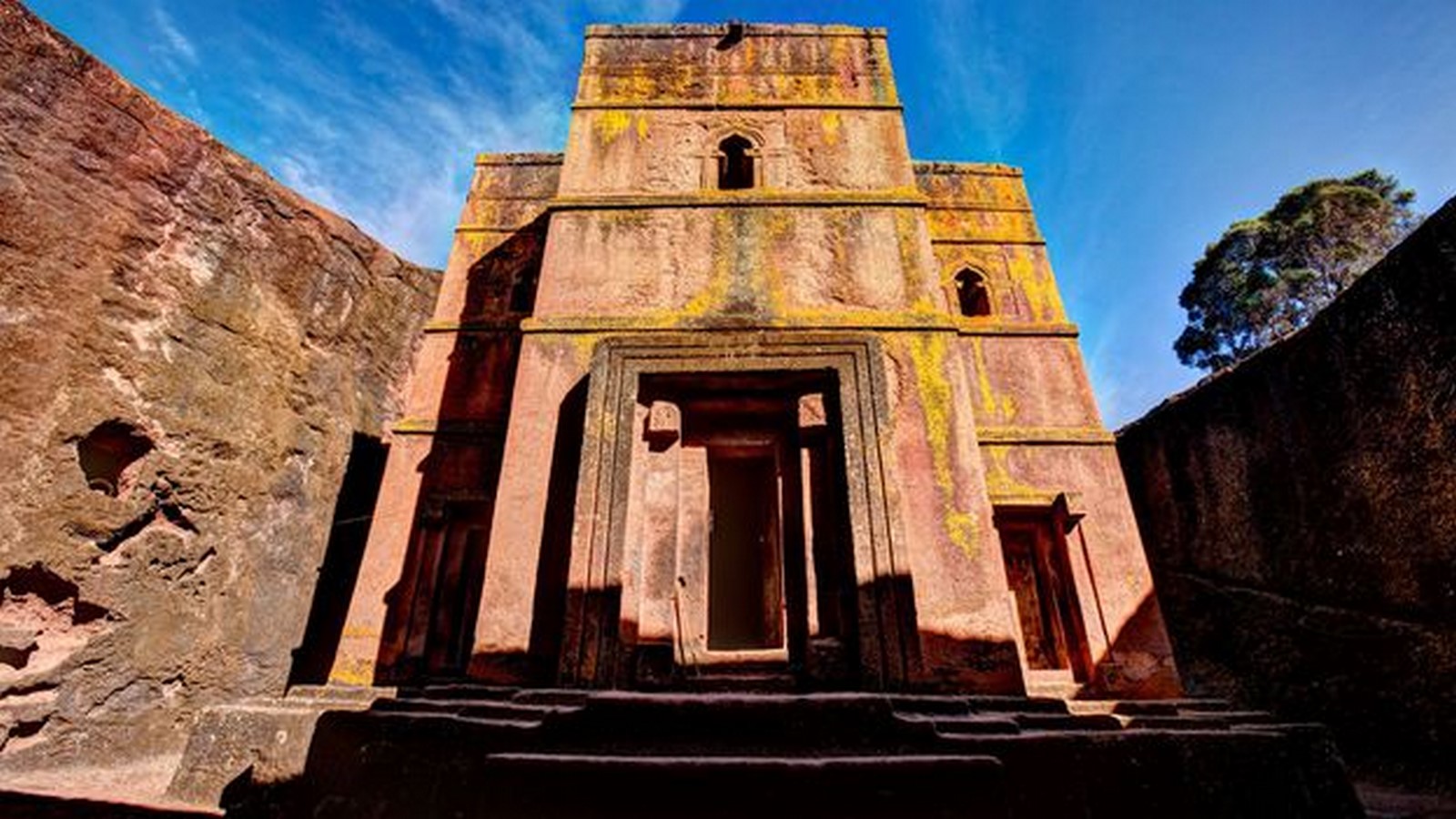
In the mountainous heart of Ethiopia, approximatelt 645 kilometres away from Addis Ababa, you’ll find eleven medieval monolithic churches carved directly from solid rock. King Lalibela oversaw the construction in the 12th century in the hopes to creat a “New Jerusalem” after Muslim conquests obstructed Christian pilgrimages to the Holy Land. The churches are believed to be the world’s largest monolithic church interconnected through an intricate network of trenches, passages and catacombs. Lalibela is now a pilgrim site for Coptic Christians offering a unique cultural and artistic testament.
Al Madam, United Arab Emirates
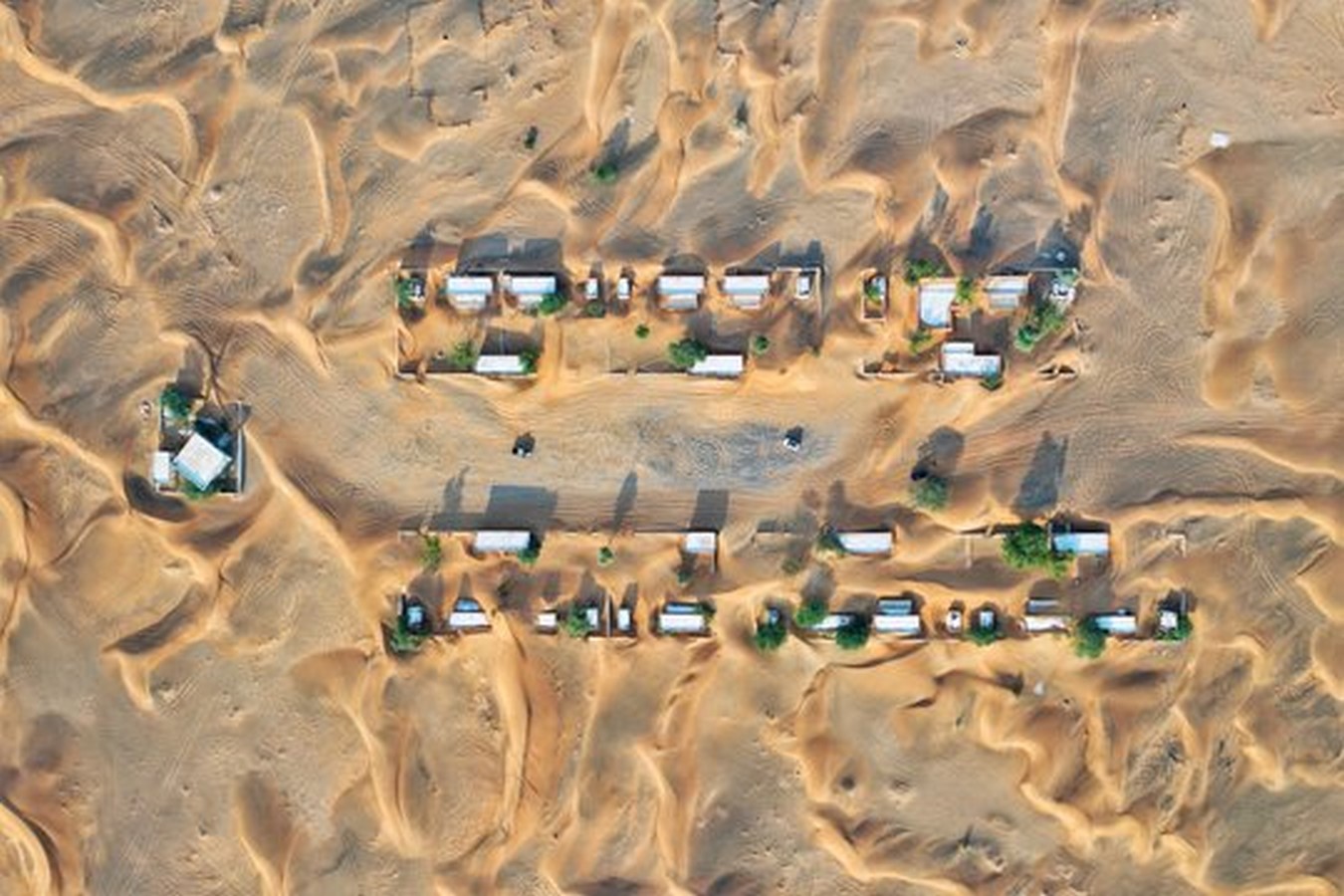
The abandoned village town of Al Madam, which resembles the sand-buried city of Kolmanskop in Namibia, holds mysterious tales. Built under the Sha’bi housing project in the 1970s to provide accommodation to the Al Ketbi tribe, it emptied by the mid-1990s. Speculation surrounds its abandonment; while some believe it is haunted by djinns, others cite the harsh living conditions. Al Madam is now a tourist attraction known for its unsettling silence and half-buried homes. Recently, Sheikh Dr. Sultan bin Muhammed Al Qasimi ordered its preservation. Located 70 kilometres from the emirates of Dubai and Sharjah, the unexplored city is accessible by road.
Tianducheng, China
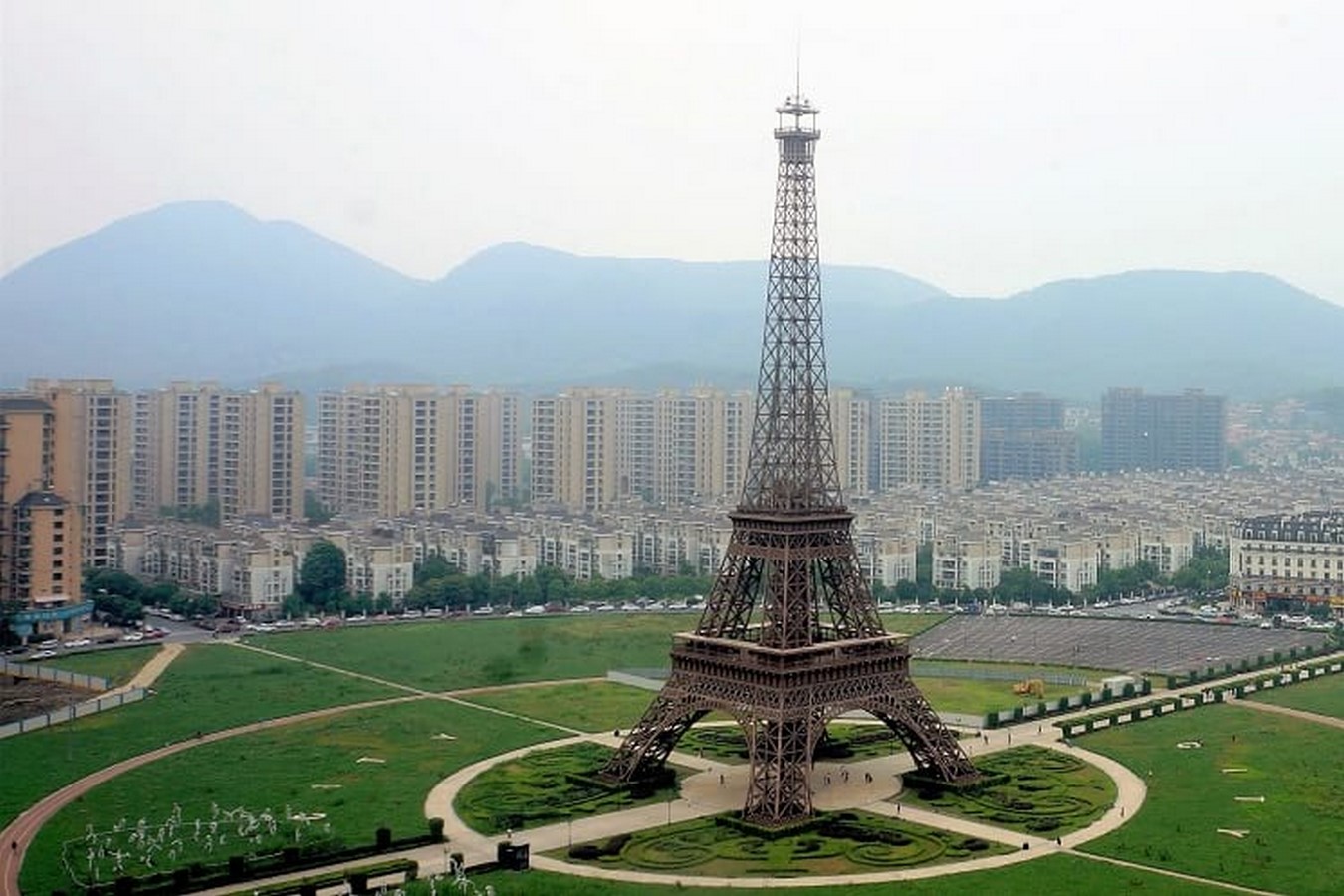
In China, there’s an interesting trend of replicating iconic cities like Venice, the White House, and even a faux Paris! Tianducheng, constructed in 2007, is a miniature Paris located two hours from Shanghai, complete with the Eiffel Tower and Parisian aesthetics. Despite its charm, the town has struggled to attract residents due to its isolated rural location. It is mainly visited by tourists and heritage lovers who are into urban decay and even wedding shoots. Experts believe Tiaducheng could eventually flourish as an active city with proper urban planning and infrastructure. The replication reflects China’s aspirations for an ideal lifestyle, blending various global influences.
Derawar Fort, Pakistan
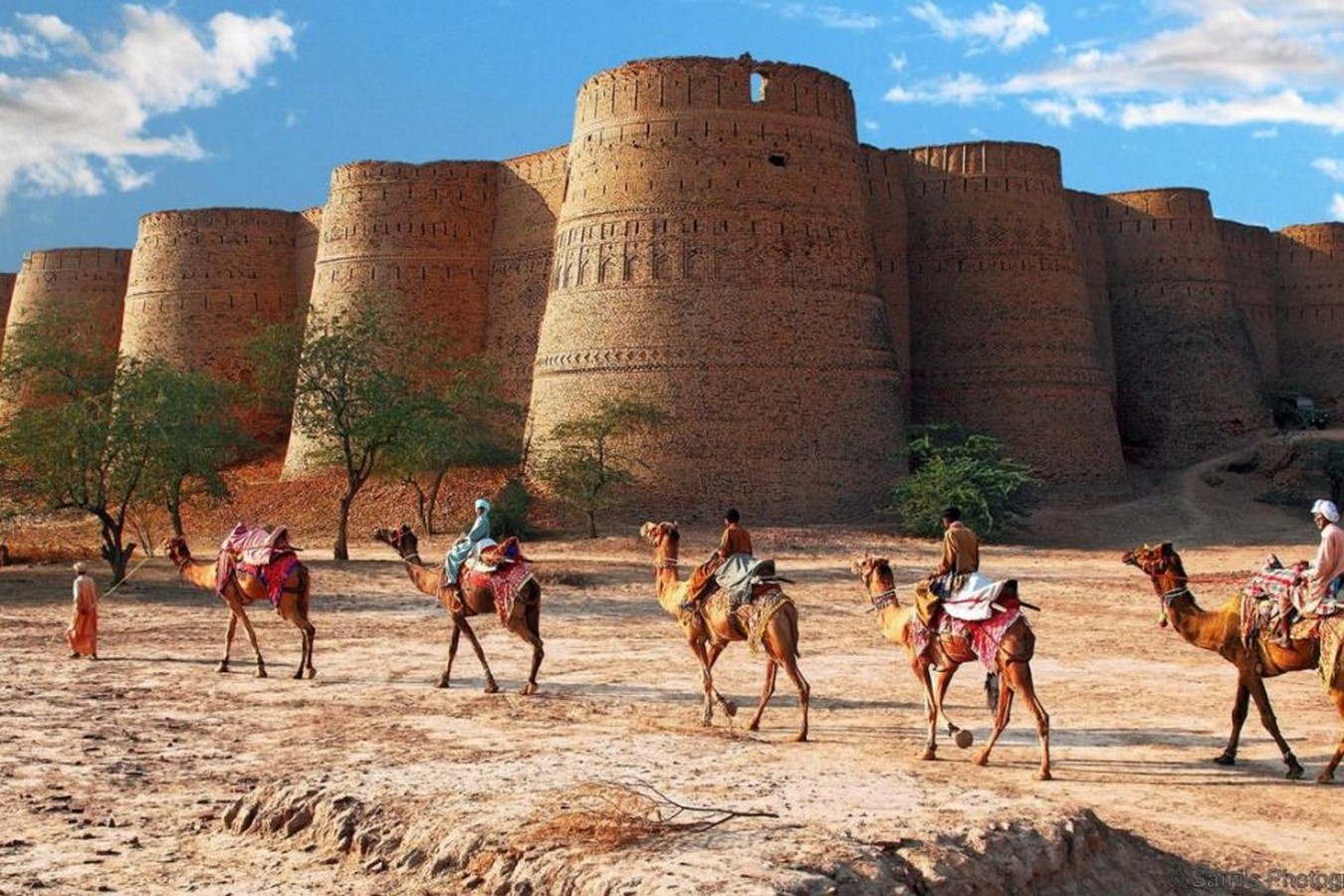
Derawar Fort, built in the 9th century by Rajput ruler Raj Jajja Bharri, is a UNESCO World Heritage Site in Pakistan. Surpassing various changes of ownership, the fort fell under the reign of Nawab Sadeq Mohammed Khan I of Bahawalpur in 1733 and lost control in 1747.
Forty towering circular bastions adorned with intricate brickwork patterns grace the structures. The square-shaped architectural marvel, constructed in clay bricks, boasts a 1500-metre wall that reaches 30 metres tall. The fort’s interiors comprise ornate tiles and fresco-adorned structure remnants, including the elegant Moti Mosque and the Nawabs’ elaborate cemeteries. Occupied by the Nawabs of Bahawalpur until the 1970s, the continuous habitation preserved it, unlike many medieval desert forts of the region.
Las Pozas, Mexico
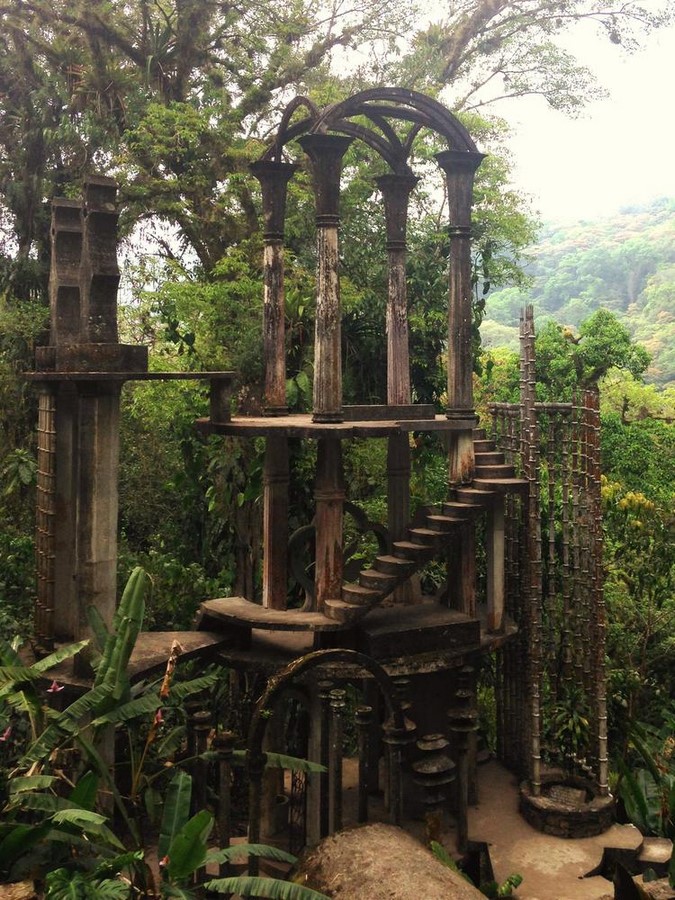
Nestled in the small Mexican town of Xilitla, Las Pozas is a surreal ‘garden of Eden’ created by English artist and poet Edward James. Built in 1947, James transformed a coffee plantation into a surreal haven. Las Pozas features over 30 structures, blending flora and Surrealist architecture, taking cues from the orchids and the Huastecan jungle. Today, Laz Pozas is a series of temples, pagodas, sculptures, stairways, and bridges. A patron of surrealist art and supporter of artists like Salvador Dali and Magritte, James was connected to luminaries like Freud and Huxley. Influenced by his love for nature and plants, he was drawn into the lush jungles of Mexico. Construction spanned 20 years until James passed in 1984, leaving behind the ruins.
The Maunsell Sea Forts, England
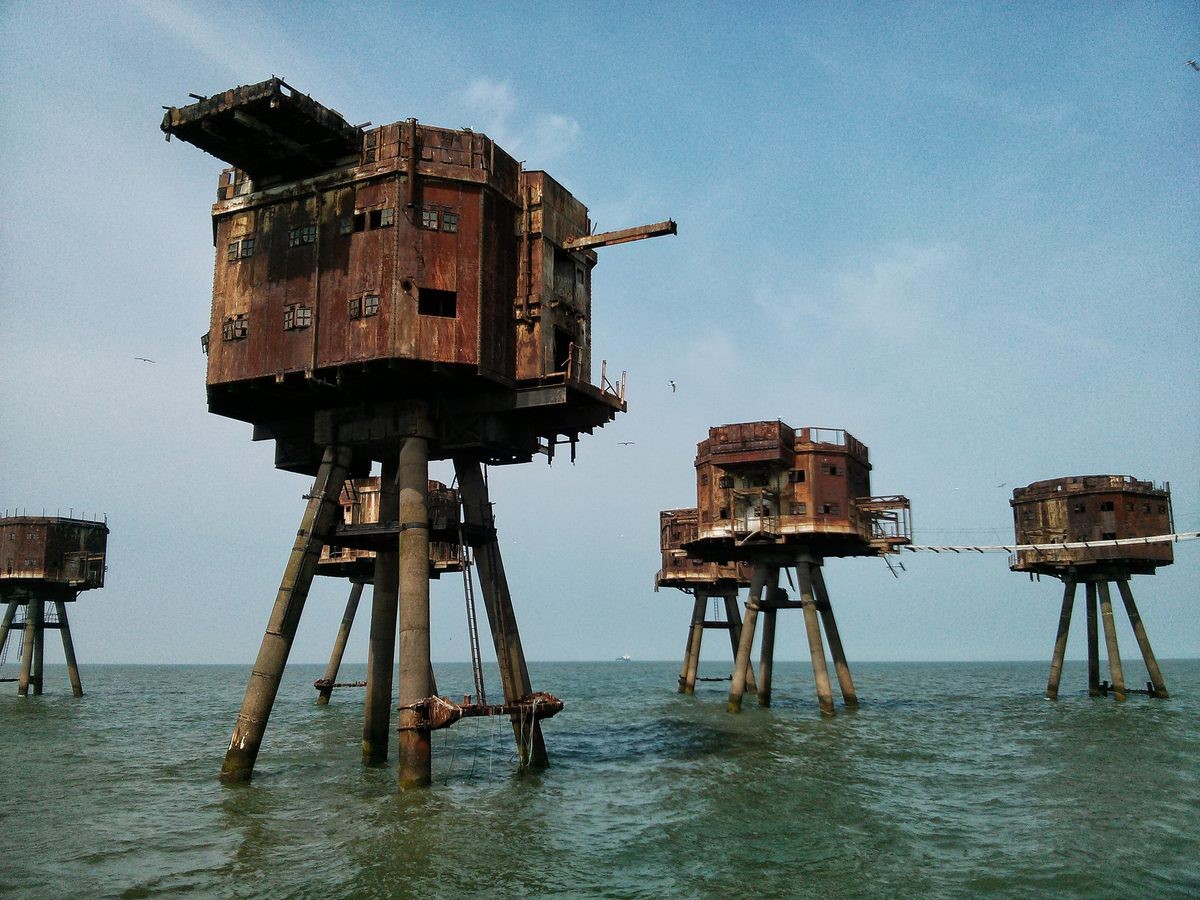
The Maunsel Army Forts rise like eerie sentinels from the Thames estuary, reminding us of haunting WWII relics. Constructed in 1942 as part of the Thames Estuary defense network, British engineer Guy Maunsell designed and engineered these anti-aircraft-tower-forts. Comprising seven stilted buildings surrounding a central tower, they were transported to their water terrains. Only the towers named Redsands and Shivering Sands remain. The seaforts were decommissioned in the 1950 after the World War II and later turned into pirate radio stations in the 1960s and 1970s.
Now abandoned, preservation efforts focus on Redsands Tower, while shivering Sands hosted an artist’s isolation experiment. Visitor access is perilous, and the forts’ decayed state discourages entry, although they can be best observed from a safe distance.
St. George’s Church, Czech Republic
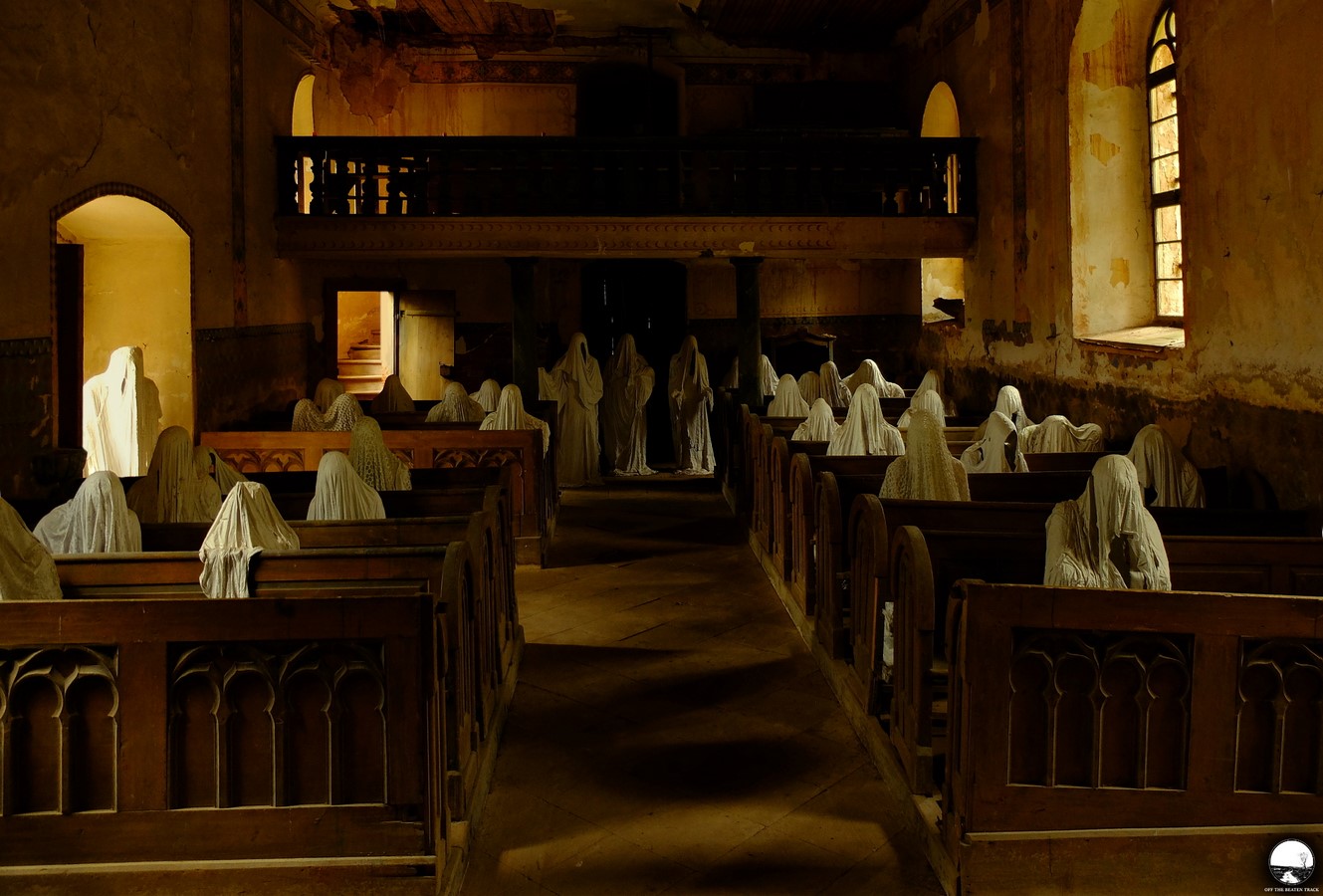
For almost half a century, a 14th-century church – St George’s church in Lukova, Czech Republic, lay abandoned after an eerie incident when the roof collapsed during a funeral, leading locals to avoid it. The church deteriorated, its valuables plundered by the communists not until 2014, when Jaxub Hadrava, a Fine Arts student, chose the church for his art installation project. The figures made of plaster, resembling ghosts, started garnering global attention, drawing visitors worldwide. Today, the church stands oddly calming despite its frightening and spooky appeal!
The Great Wall, India

The Great Wall of China, celebrated as a global wonder, has a lesser-known counterpart in India-the Kumbhalgarh Fort. Located in Rajasthan, this fort bears a striking resemblance to the Great Wall of China and is referred to as the “Great Wall of India”. Constructed by Rana Kumbha, the leader of the Meward kingdom, the fort holds historical significance as a birthplace of Maharana Pratap, one of the most esteemed Rajput kings and a formidable adversary whom the Mughals dreaded.
Namely the second longest wall, the extensive fort is a historical gem, serving as a testament to India’s rich cultural heritage and its own version of a grand wall.
References:
- Jarryd, A. and (2023) Tianducheng – China’s Strange City of Paris, NOMADasaurus. Available at: https://www.nomadasaurus.com/tianducheng-chinas-strange-city-paris/ (Accessed: 12 October 2023).
- Centre, U.W.H. (no date) Chan Chan Archaeological Zone, UNESCO World Heritage Centre. Available at: https://whc.unesco.org/en/list/366/ (Accessed: 14 October 2023).
- Abhishek (2019) The second longest wall in the world at Kumbhalgarh Fort, Rajasthan, On a Cheap Trip. Available at: https://www.onacheaptrip.com/kumbhalgarh-fort-rajasthan/ (Accessed: 12 October 2023).
- Ugc (2010) Maunsell Army Sea Forts, Atlas Obscura. Available at: https://www.atlasobscura.com/places/maunsell-army-sea-forts (Accessed: 13 October 2023).
- Visit the Czech village that’s home to one of the world’s Spookiest Churches (2021) Prague, Czech Republic. Available at: https://www.expats.cz/czech-news/article/does-this-czech-village-have-the-world-s-spookiest-church (Accessed: 15 October 2023).
- Ugc (2011) Las Pozas, Atlas Obscura. Available at: https://www.atlasobscura.com/places/las-pozas (Accessed: 13 October 2023).





















